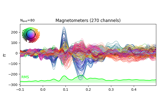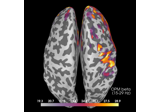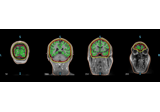mne.make_bem_solution#
- mne.make_bem_solution(surfs, *, solver='mne', verbose=None)[source]#
Create a BEM solution using the linear collocation approach.
- Parameters:
- surfs
listofdict The BEM surfaces to use (from
mne.make_bem_model()).- solver
str Can be ‘mne’ (default) to use MNE-Python, or ‘openmeeg’ to use the OpenMEEG package.
New in version 1.2.
- verbose
bool|str|int|None Control verbosity of the logging output. If
None, use the default verbosity level. See the logging documentation andmne.verbose()for details. Should only be passed as a keyword argument.
- surfs
- Returns:
- beminstance of
ConductorModel The BEM solution.
- beminstance of
Notes
New in version 0.10.0.
Examples using mne.make_bem_solution#

Working with CTF data: the Brainstorm auditory dataset
Working with CTF data: the Brainstorm auditory dataset

Compute source power spectral density (PSD) of VectorView and OPM data
Compute source power spectral density (PSD) of VectorView and OPM data
